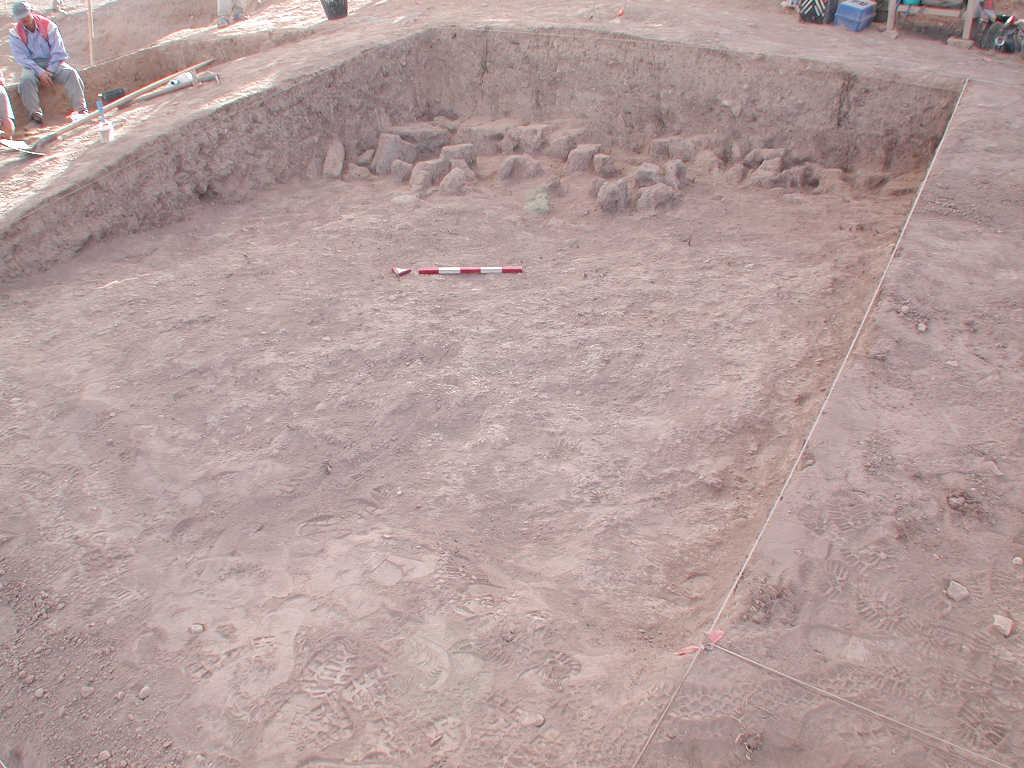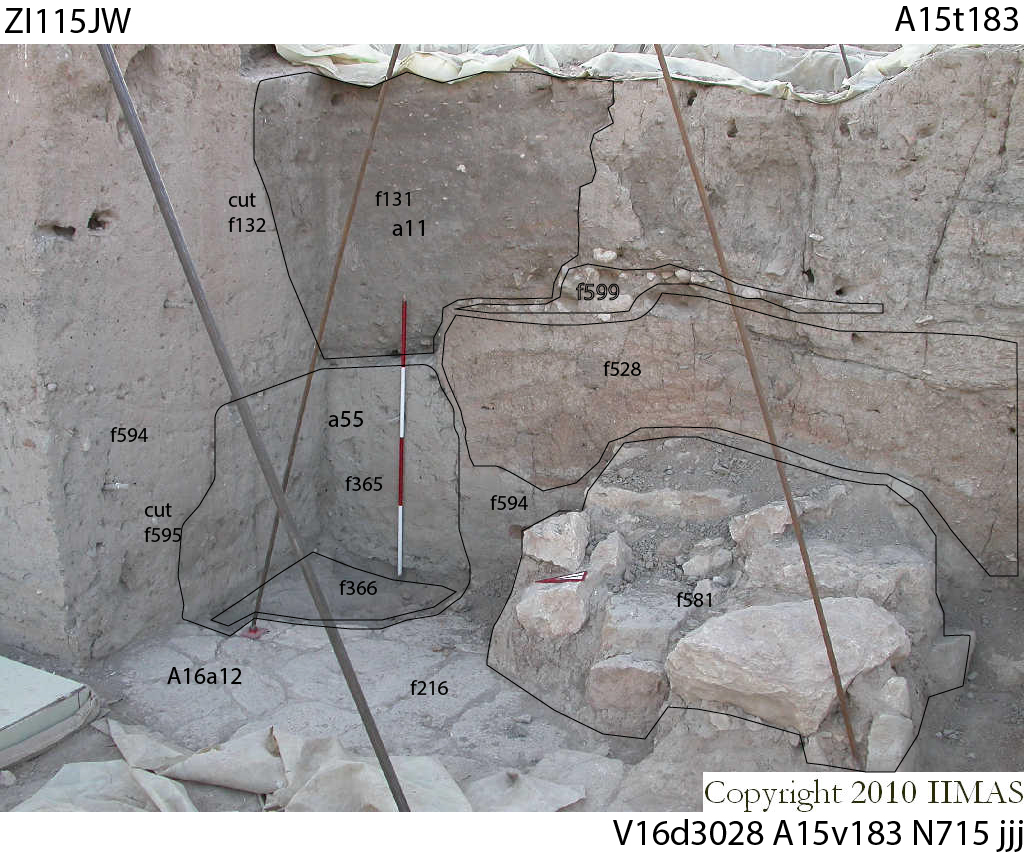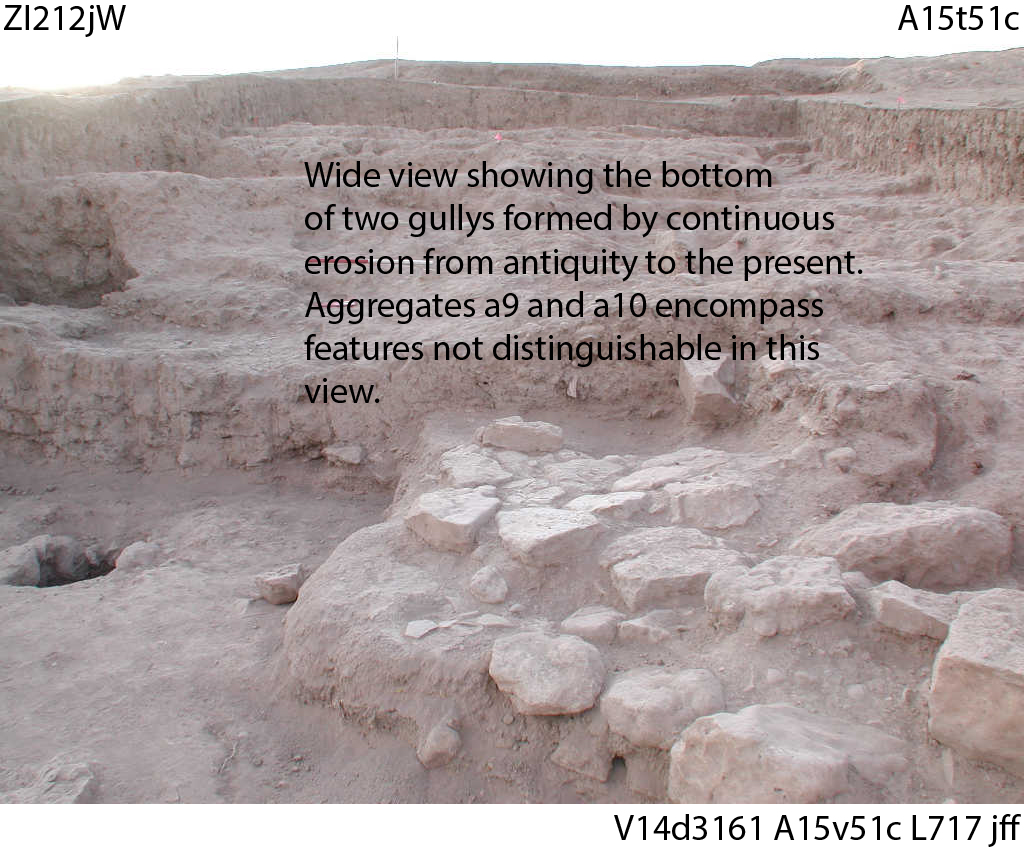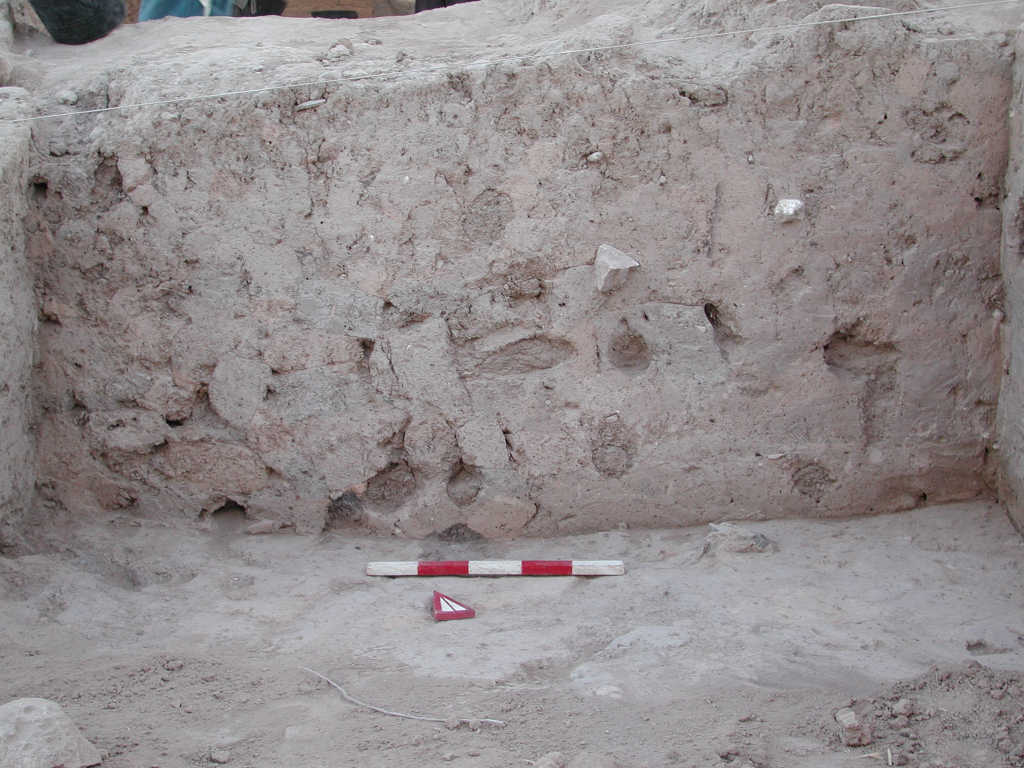Back to top: Stratigraphy/Emplacement
Summary
This section collects those features (usually fills, dumping, or collapse) that contribute minimal understanding about the stratigraphic column. The inclusions are often randomly aligned and not always contained. Specific to this unit are also gullys that erode and mix features, baulks excavated as a single feature without regard to stratigraphy and isolated stones and individual bricks.
Back to top: Stratigraphy/Emplacement
Brickfall
| There were ten significant brickfalls associated with two phases. The first type can be attribute to natural erosion after the Khabur town was abandoned. It is evidenced by a scattering of individual eroded bricks. Brickfall f38 is an example. | 
| |
| The second type of brickfall occurred during the time that the Tupkish palace was being remodeled to accommodate the needs of Queen Tar'am Agade. The internal walls that defined the formal reception area were demolished as the functions of the space were shifted to the south. Apparently at least one of the walls, f528, fell in one piece to the north, landing atop stub wall, f581. We have redisignated the fallen portion as f601 due to its significance. |

|
Back to top: Stratigraphy/Emplacement
Fills
| There were 35 fill features excavated. 21 fill features were associated with pits, 9 fill features were associated with graves or burials, and 5 were associated with other features. One unusual situation arose when a Khabur era pit with ashy fill, a11, was cut into an earlier Old Babylonian pit,a55, that probably was cut to rob flagstones from the abandoned ceremonial courtyard. |

|
Back to top: Stratigraphy/Emplacement
Gullys
| There were 3 gully aggregates excavated. Two of the gully aggregates, a9 and a10 overlapped in the southern half of the unit. Both sloped downward from east to west following the fall line and likely were deepest between the palace walls. A smaller gully, a27, again sloping downhill from east to west cut through the south end of the Khabur industrial area, a52. the effect of the gullys was to destroy a number of features and seriously damage many others. The Old Babylonian features were particularly affected. |

|
Back to top: Stratigraphy/Emplacement
Isolated stones and bricks
| There were 2 isolated stones and 17 isolated individual bricks excavated in various parts of the unit. All were designated as features although they well may have been declaired as items. |
Back to top: Stratigraphy/Emplacement
Baulks
| As we normally excavate, a one-meter slice remains intact along the east and north sides of a 5 meter-square locus. This provides for a pathway for spoils removal and provides a living record of the soil features. Baulks may be removed by layers or as a unit. In three cases, f172, f179, and f186 they were removed as a unit because the stratigrapy was already well documented in these loci. |

|
Back to top: Stratigraphy/Emplacement